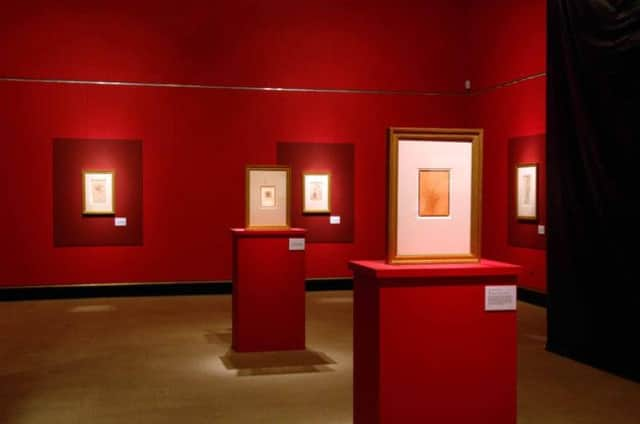New recruits get chance in heritage sector


The Heritage Lottery Fund and Museums Galleries Scotland (MGS) joined forces in 2011 to deliver an innovative way of making the heritage sector more accessible to people wanting to enter the workforce.
The partnership was borne from a desire to plug the skills gaps in the industry, safe guard knowledge and skills and to level the playing field. Finding a job in the heritage industry can be dependent upon long-term volunteering or achieving post graduate qualifications, which can be unachievable for a large number of people.
Advertisement
Hide AdAdvertisement
Hide AdThree years on, 40 interns have been through the programme and the standard of skills in the industry have never been higher and more diverse.
On 25 September, the second cohort of 20 interns will celebrate their graduation from their 12-month work-based placement within museums in Scotland.
The first cohort of 20 paid interns fought off stiff competition in a field of over 200 applicants to secure their placements.
Testament to the success of this first round was that every intern in the first cohort found employment or went on to higher education within six months.
Describing the programme as a “win-win” for both museums and interns, Joanne Orr, chief executive of MGS, said that the programme “offered a highly effective learning experience for both parties”.
Hosted across 28 museums and galleries across Scotland from as far north as Orkney to as far south as Dumfries, over 100 individuals will have worked with the interns throughout their journey.
James Wedlake, a shining star of this year’s internship programme, has already delivered.
James researched into Hugh Green’s life and work, an artist who was an “unknown genius”, a decorator and friend of Charles Rennie Mackintosh.
Advertisement
Hide AdAdvertisement
Hide AdJames sourced items for an exhibition from private ownership, negotiating loans and purchases, conducting interviews, digitising images, selecting frames, and wrote a 19,000-word catalogue.
The Stirling Smith museum, which hosted James’ internship, will stage the exhibition.
“My internship was the best thing that happened to me,” James said. “It was an essential stepping stone into the industry from university and it gave me the time and confidence I needed to set up my own exhibition.
“It’s a very complex process. Stirling Smith gave me the opportunity to work with and be mentored by them. Museums Galleries Scotland ran the programme and ensured that all interns walked away with tangible skills and benefits to be able to get work and stay in heritage in Scotland.
“Finally, the Heritage Lottery Fund paid for the programme to be rolled out. It’s been a significant team effort that will see benefits for years to come.” Following the success of the programme, the Heritage Lottery Fund has announced a new wave of funding for a new traineeship programme, prompted by the success of the two previous internship schemes managed and delivered by MGS.
To further develop employability skills for people without a degree, £422,000 has been awarded to MGS. Upon completion, trainees will have achieved an SVQ vocational qualification in Museum Practice.
Joanne Orr, chief executive of MGS, said: “We launched the first two years of the internship programme with HLF specifically to help people who want to work in the heritage sector develop the skills needed to get a job.
“It’s increasingly evident that the heritage sector is becoming more and more popular as a career option with demand for these internships exceeding our expectations.
Advertisement
Hide AdAdvertisement
Hide Ad“Through the next programme – Heritage Horizons - we are giving a broader range of people the opportunity to pursue a career in heritage. We have seen over the past couple of years that experience gained through internships and the valuable opportunity to learn skills in a museum makes a significant difference to the interns’ lives, as well as ensuring that the future of Scotland’s heritage is in safe and skilled hands.”
James’ mentor, Elspeth King, Director of the Stirling Smith Museum and Art Gallery, agreed that the team effort was crucial to the success of the programme. “It works because all the organisations involved want the same thing – effective, work-based training and people from all backgrounds coming into the sector.
“Working with an intern has brought a new dimension to the small team at Stirling Smith. It has made us more focused, made us more aware of our skills and what we can offer, and it reinforced the importance of this programme in securing the future of Scotland’s heritage.”
• Steve Scott is the head of resources for Museums Galleries Scotland. For more information about applying for the Heritage Horizons intake for 2014-15, visit www.museumsgalleriesscotland.org.uk
SEE ALSO